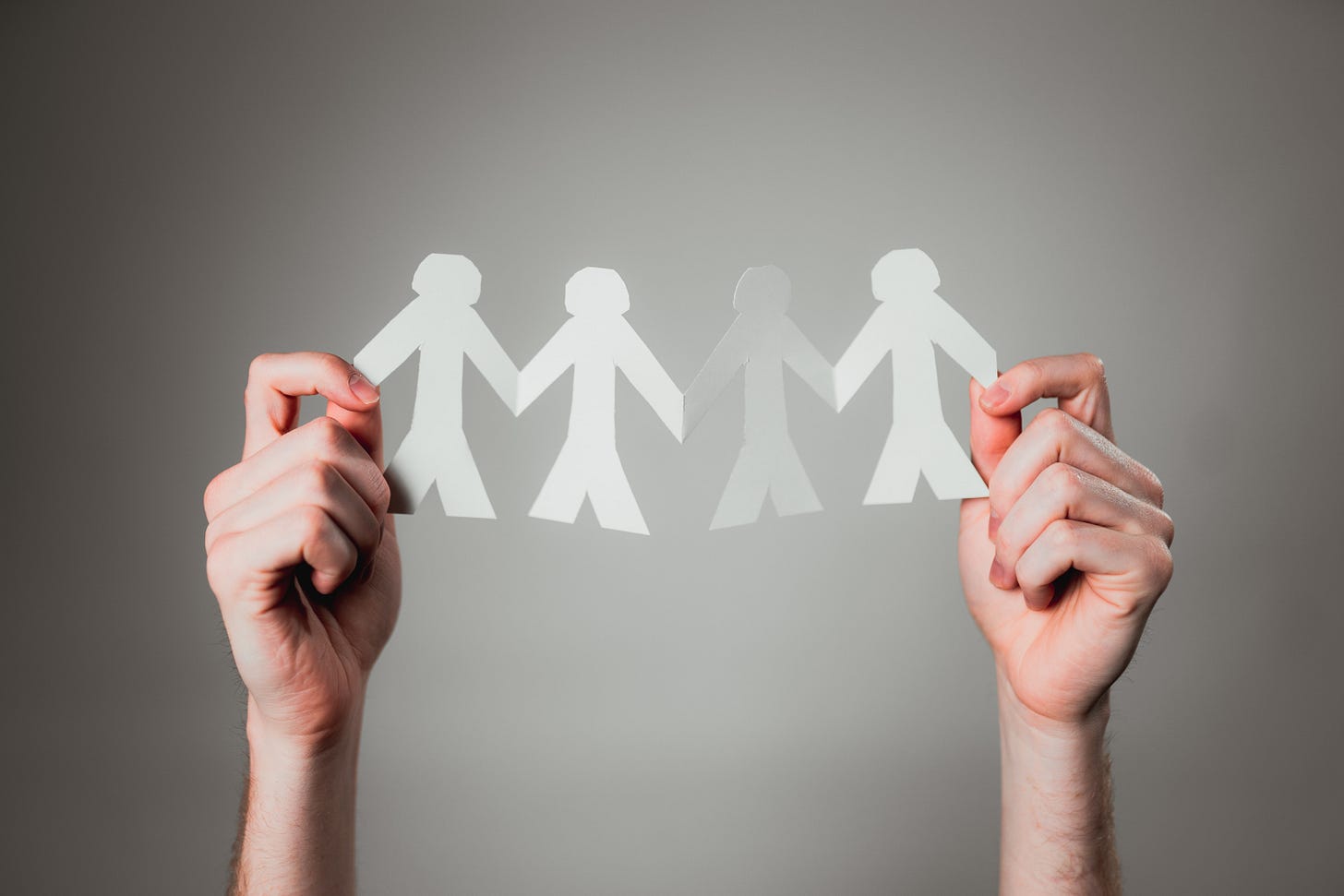Breaking the Tribal Mindset: Overcoming Group Bias in Modern Society
We can overcome group biases by invoking a common identity or goal
Groups have played a major role in human life since our early nomadic ancestors. They needed the ability to differentiate between members of their tribe vs others who might do them harm.. People who could differentiate between members of their tribe vs outgroups had a better chance of survival, which created a selection pressure in favor of this skill. Alongside this group categorization, we developed common thought patterns about the outgroup, which gave people a behavioral foundation in how to handle their collisions with other tribes. We overemphasize the diversity of thoughts and people within our own group. We underemphasize the humanity and diversity of the members of the outgroup. It is conjectured that this developed, so early humans would be more capable of violence against the outgroup. It would make sense that early on in our existence that this automatic thought pattern would be advantageous. Tribes who exhibited this quality would be better equipped to attack other tribes for their resources, and protect against opposing tribes.
While the ingroup vs outgroup thought pattern may have been beneficial in early human life, it causes many issues today. This makes sense given that we could not possibly evolve to keep pace with the rapid growth of technology and our civilization. We originally lived in smaller tribes with a more condensed geographic footprint. These tribes had much less people than the communities we live in today. People were able to know and trust members of their tribe while being distrustful of strangers. Nowadays we could not possibly know and trust everyone in a city or even a mid-size town. We join smaller groups within our community, and our tribal thought patterns influence how we interact with our own group and other groups. We see this Ingroup-Outgroup bias across the board in religions, political parties, sports team, ethnicities, fitness classes, and schools.
One way to reduce the Ingroup-Outgroup bias between two groups is to invoke a common identity. For example instead of democrats and republicans, we identify ourselves as Americans. Following 911, there was a heightened sense of nationalism, trust in the government, and American identity. The presence of this outside threat of terrorism united American people in a difficult time. This effect did not united everyone, but caused greater unity than there would have been otherwise.
We can see this same phenomenon with smaller group identities. In the Robbers Cave experiment, boys were separated into two groups at summer camp. They were allow to form their own group names, norms, and hierarchies. As soon as members of one group heard that there was another group in the camp, they immediately began speaking negatively about the other group even though they knew nothing about it. The researchers had the two groups compete against each other in sports. The researchers were able to reduce the hostility and bias between the two groups by creating a common goal for the two groups to work towards. The researchers staged an incident where the food truck broke down outside of the camp. The two camp groups worked together to pull the truck into camp by rope. The cooperation between the two groups reduced hostilities, and led to friendships between members of the opposing group.
We need to be aware of our biases of other groups. We can actively reduce tensions between groups by promoting common goals and identities. For our partisan divide, we should focus on our overall identity as Americans, and our common goals. We should find something less extreme than a terrorist attack to unite over. We can use this to improve relations between many different types of groups.






Great article. Love the example of the boys at camp working together. Thought provoking!